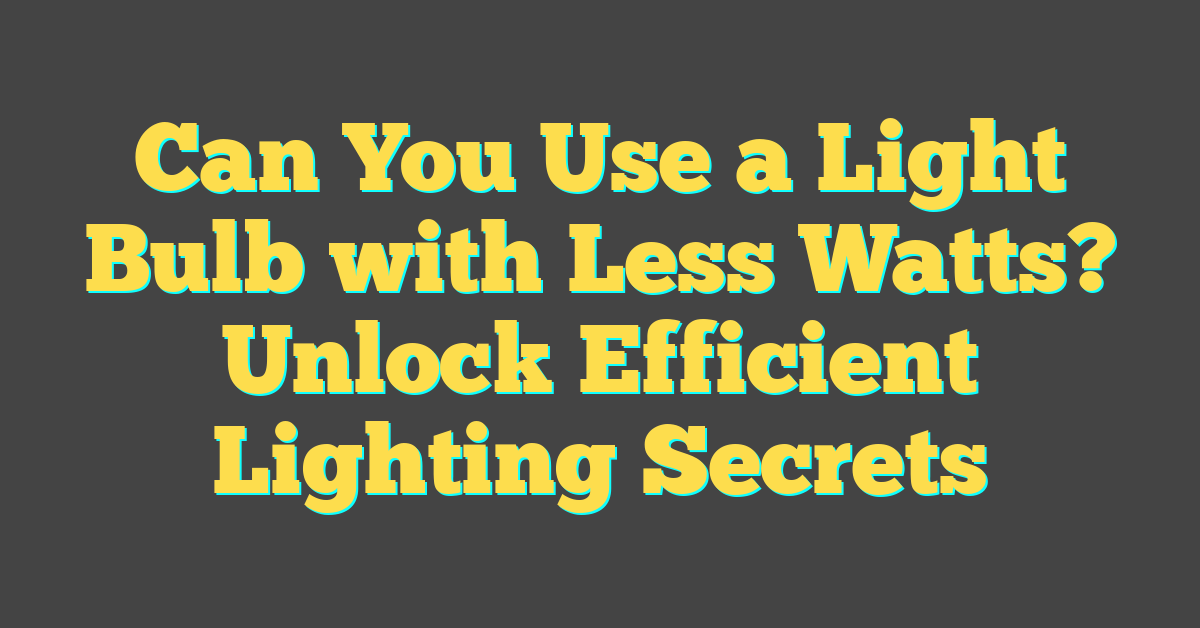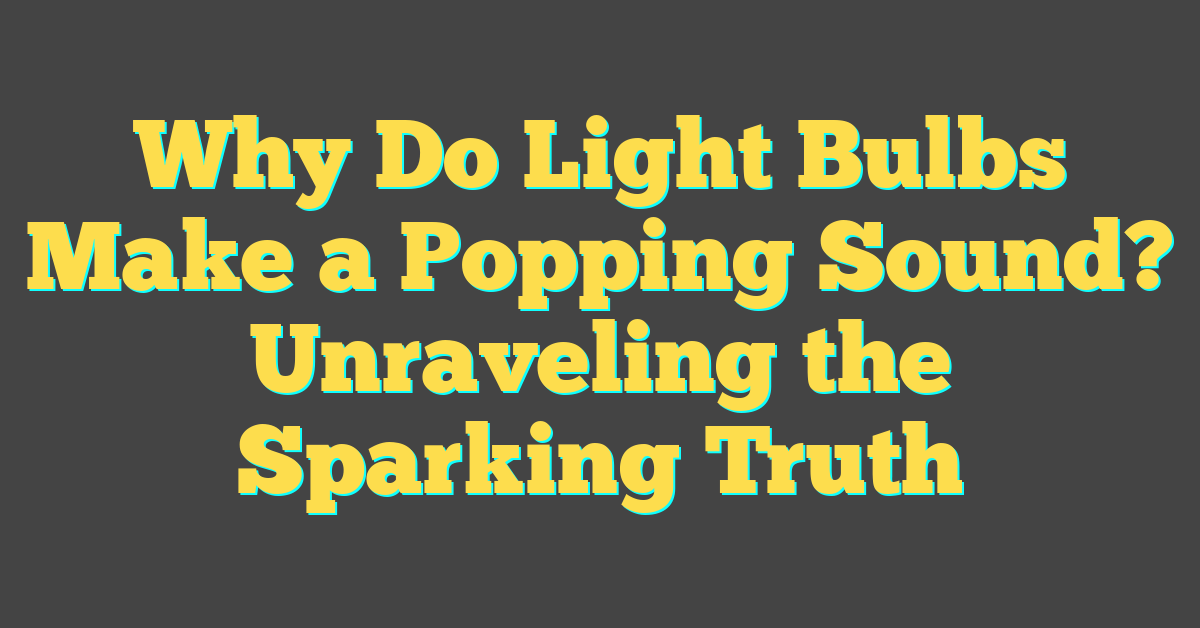With the shift towards sustainable living, Compact Fluorescent Lamps (CFLs) have become a popular choice for those looking to reduce their energy consumption and impact on the environment. CFLs offer a host of benefits, including significant energy savings compared to traditional incandescent bulbs. They use about 75% less energy and can last up to 10 times longer, providing an economically sound choice for residential lighting.


CFLs not only contribute to lower electricity bills but also help in reducing the carbon footprint of households. Their low heat emission makes them safer to operate and can contribute to cooling costs in your home. Moreover, their versatility in design means that CFLs can be used in a variety of settings, from desk lamps to ceiling fixtures, offering a range of brightness and color options to suit your needs. CFLs are an investment in both financial savings and environmental sustainability.
Key Takeaways
- CFLs are energy efficient, reducing electricity usage and providing cost savings.
- They contribute to environmental protection by lowering household carbon emissions.
- The design versatility of CFLs allows for a wide application in various lighting fixtures.
Overview of CFL Light Bulbs
https://www.youtube.com/watch?v=AYsadxI0UKk&embed=true
In your journey to energy-efficient lighting, you’ll likely encounter CFLs, or compact fluorescent lamps. These bulbs are budget-friendly and can reduce your energy consumption considerably.
Definition and Basic Concepts
A CFL is a type of fluorescent lighting enclosed in a shape similar to that of traditional incandescent bulbs. Unlike incandescents, CFLs require less power to produce the same amount of light, which means they are more energy-efficient. Here’s how they work: electricity excites a mix of gases within the bulb, which in turn illuminates the fluorescent coating on the inside of the bulb to emit visible light.
History of CFL Advancements
CFL technology isn’t new; it’s been around since the 1970s. However, advancements in CFL design have made them more user-friendly and widely adopted. For example, early compact fluorescent lamps were bulkier and took time to warm up, providing less than ideal lighting solutions. Modern CFLs turn on instantly, fit into standard light sockets, and come in various sizes and shapes suitable for your home.
Economic Advantages
https://www.youtube.com/watch?v=Kau3TI1GqME&embed=true
In this section, you’ll discover how CFL bulbs can be a wallet-friendly choice in the long run. We’ll look at not only the upfront costs but also how these energy-efficient bulbs pay back over time and reduce your energy bills.
Cost Savings Over Time
When you switch to CFL bulbs, you’re investing in a product that lasts significantly longer than traditional incandescent bulbs. Although the initial purchase price might be higher, CFLs shine for up to 8 times as long. This means fewer replacements, less hassle for you, and more savings as time goes on. By consuming roughly 60% less energy, these bulbs will slim down your electricity costs considerably.
Payback Period Relevance
The payback period refers to the time it takes for your investment in CFL bulbs to pay for itself through savings on your energy bills. Given that CFLs have a longer lifespan and the cost of each kilowatt-hour (kWh) adds up on your energy bill, the payback period for CFLs is relatively short. You’ll start to save money quickly, which is essential in today’s economy.
Energy Bills Impact
Let’s talk numbers: CFL bulbs use about one-fourth the energy of an incandescent bulb to provide the same amount of light. This can result in less energy used and thus, a sizeable decrease in your energy bills. For you, this means tangible savings on each bill. With the average household’s lighting accounting for about a quarter of the total energy costs, selecting CFLs makes a noticeable difference in how much you pay every month.
Environmental Benefits
https://www.youtube.com/watch?v=tzsunA6BPkU&embed=true
In your journey to be more environmentally conscious, choosing the right lighting options can make a significant difference. CFL light bulbs stand out for their reduced energy consumption and lower carbon emissions, contributing to a greener planet.
Reduction in Carbon Emissions
Energy Efficiency: CFLs are renowned for using approximately 75% less energy than traditional incandescent bulbs. This substantial decrease in energy usage translates directly into a reduction in carbon dioxide emissions, as less energy generation means fewer greenhouse gases are released into the atmosphere.
Eco-Friendly Disposal and Recycling Options
« Free Light Bulbs Oregon: How to Brighten Your Home at No Cost
Light Bulb Does Not Work: Quick Fixes for Common Issues »
Recycling programs: Because CFLs contain a small amount of mercury, proper disposal is crucial to prevent hazardous waste from entering landfills. Many areas offer recycling programs specifically for CFLs to ensure eco-friendly disposal.
Safe Cleanup: If a bulb breaks, ventilate the area to minimize environmental impact. Avoid vacuuming immediately to prevent the spread of mercury vapor, and follow EPA guidelines for cleaning up.
Minimizing Environmental Impact
By choosing CFLs, you’re not just cutting down on your home’s energy consumption; you’re also contributing to a larger goal of reducing global greenhouse gas emissions. Swapping one incandescent bulb for a CFL saves enough energy to light 3 million homes and prevent emissions equivalent to those from 800,000 cars.
Energy Efficiency and Consumption
https://www.youtube.com/watch?v=C4ZK-EfiGSE&embed=true
In the realm of lighting, you’ll find that energy efficiency is a game-changer, especially when comparing CFLs to traditional options. Your choice in bulbs not only impacts your electricity bill but also the overall energy consumption.
Comparison with Incandescent Bulbs
CFLs are a leap forward in efficiency when compared to incandescent bulbs. While an incandescent bulb typically converts only 10% of its consumed energy into light and releases 90% as heat, a CFL bulb uses its energy much more effectively. In concrete terms, you’re looking at a situation where a CFL bulb uses approximately 75% less energy. For instance, to produce the same amount of light measured in lumens, where an incandescent bulb may use 60 watts, a CFL might only use around 13 to 15 watts. That means more light for your watt and less strain on your wallet.
Efficiency Metrics and Measures
When you measure the efficiency of a bulb, you look at lumens per watt—the amount of light produced for each watt of electricity consumed. CFLs shine with numbers typically between 60 to 70 lumens per watt, a stark improvement over the old-school incandescent options. To understand this better, consider LEDs as well; while even more efficient than CFLs, CFLs present a cost-effective medium that balances upfront cost and efficiency. This choice can reduce your home’s energy consumption significantly, leading to a decrease in the electricity needed and thus, a lower electricity bill. An investment in CFL bulbs contributes to less energy waste and marks a step towards more energy-efficient living.
Design and Versatility
https://www.youtube.com/watch?v=7v-W63XfA2Y&embed=true
Your choice in lighting can greatly influence the look and feel of your space. CFL bulbs offer a wide range of designs that can accommodate various tastes and functional needs, making them a versatile option for many different settings.
Variety in Shapes and Sizes
CFLs come in an assortment of shapes and sizes, suitable for a variety of uses. Spiral bulbs are a common selection for table lamps, offering a compact yet efficient light source. If you prefer something that resembles traditional bulbs, ‘A-line’ CFLs blend in seamlessly with most home or office environments. For decorative needs, CFLs like globe or candle-shaped bulbs add a touch of elegance while still providing the energy efficiency you’re looking for.
Adaptability to Different Fixtures
The versatility of CFLs extends to their adaptability with different types of fixtures. Recessed fixtures and track lighting benefit from the use of reflector or flood type CFLs that direct light to specific areas, perfect for highlighting artwork or accenting a room. The design of CFLs allows them to fit into standard screw-in connections, which means they can be used to retrofit older fixtures, bringing modern efficiency to even the most traditional lighting setups.
Quality of Light
https://www.youtube.com/watch?v=lmTc_oKoS1s&embed=true
When you’re considering CFL (Compact Fluorescent Light) bulbs, you want to ensure that the quality of light meets your needs. Factors such as color accuracy and temperatures, alongside brightness levels, play crucial roles in how well a CFL can illuminate your space.
Color Accuracy and Temperatures
CFL bulbs offer a wide array of color temperatures, which means you can select the shade of light that best suits your room. Color temperature is measured in Kelvin (K), and CFLs can range from warm to cool light. Warm colors provide a yellowish hue, similar to incandescent bulbs, usually around 2700K to 3000K. These are ideal for creating a cozy atmosphere. Moving up the scale, cool whites—ranging from 3500K to 4100K—emulate daylight and can help you focus, perfect for workspaces or kitchens. The higher Kelvin temperatures (5000K or more) produce a bluer, more refreshing light often used in areas where true color perception is important, such as art studios.
Brightness Levels and Control
CFLs are known for their energy efficiency, with light output significantly higher than that of incandescent bulbs. You’ll find that they emit about 70 lumens per watt, making them a brilliant choice for both task lighting and ambient light. Moreover, they provide a steady light source without the flicker associated with some fluorescent lighting, so you can enjoy continuous brightness without interruption.
Controlling the brightness of your CFL bulbs is straightforward. Most are compatible with dimmer switches, allowing you to adjust the brightness levels according to your preference or the time of day. Remember that not all CFLs are dimmable, so be sure to check the packaging or product description before purchasing if this feature is important to you.
Technical Features
https://www.youtube.com/watch?v=nCrgCLTxRaI&embed=true
When looking into CFL bulbs, technical features like the type of ballast used and dimming capabilities are essential to understand how they will fit into your home’s lighting system.
Ballast Types and Their Functions
Ballasts are crucial for controlling the current through a CFL bulb to ensure stable and efficient operation. There are two main types: electronic and magnetic ballasts. Electronic ballasts are more energy-efficient, produce less heat, and work quietly compared to magnetic ballasts. They provide a more reliable power flow and are often the preferred choice in modern CFL designs.
Dimming Capabilities and Considerations
When you’re considering an ambiance adjustment with lighting, you’ll need to know about your CFL’s dimming capabilities. Dimmable CFLs are specifically designed to work with dimmer switches. However, not all CFLs can dim. You must ensure that both the bulb and the switch are compatible. Typically, a dimmer switch designed for incandescent bulbs will not function correctly with CFL bulbs, leading to flickering or reduced lifespan. It’s important to use a switch specifically designed for dimmable CFLs to avoid these issues.
Safety and Health Considerations
https://www.youtube.com/watch?v=Nf0u3fJ3kEw&embed=true
When considering the safety and health aspects of CFLs, it’s important for you to be aware of the mercury content within these bulbs and the specific handling procedures recommended to manage any associated risks.
Mercury Content and Toxicity
CFL bulbs contain a small amount of mercury, which is essential for their energy-efficient light production. Although the amount of mercury is quite low—often around 4 milligrams per bulb—the toxicity of mercury means that if a bulb breaks, it can pose health risks. The Environmental Protection Agency (EPA) has established safety guidelines and regulations to mitigate the impact of mercury exposure.
- Safe Clean-Up Steps:
- Evacuate the area for 5-10 minutes.
- Use stiff paper to scoop up the fragments.
- Seal the fragments in a plastic bag.
- Use duct tape to pick up tiny pieces and powder.
- Wipe the area clean with a damp paper towel.
- Dispose of clean-up materials according to local regulations.
Proper Handling Procedures
To ensure your safety while using CFLs, follow the EPA’s handling regulations:
- Always handle CFLs by the base to avoid pressure on the glass.
- Screw and unscrew the bulb gently from the base.
- If a bulb burns out, let it cool before handling.
- Recycle CFLs at the end of their life span according to local waste management policies, which helps prevent the release of toxic mercury into the environment.
- Store unused bulbs in their original packaging or another protective covering to avoid breakage.
Remember, following these procedures not only keeps you safe but also contributes to environmental conservation by properly managing toxic substances.
Durability and Lifespan
https://www.youtube.com/watch?v=NkA4FOJb3yo&embed=true
When you’re choosing light bulbs, understanding their durability and lifespan is crucial. These factors not only ensure that you get the most out of your investment, but also reduce the hassle of frequent replacements.
Longevity Compared to Alternatives
Compact Fluorescent Lamps (CFLs) have a significant advantage in lifespan when compared to traditional incandescent bulbs. On average, CFL bulbs can last up to 10,000 hours, making them a reliable choice for long-term use. In comparison, standard incandescent bulbs typically have a lifespan of about 1,200 hours. If you’re considering LED bulbs, they exceed even CFLs in longevity with a lifespan that can approach or surpass 15,000 hours. This comparison between CFL and LED bulbs breaks down their relative lifespans and efficiency.
Factors Influencing Bulb Lifespan
Several factors affect the lifespan of your CFL bulbs. To ensure you get the full benefit of their durability, consider the following:
- On-Off Cycling: The more frequently you switch the bulb on and off, the shorter its lifespan will be.
- Vibrations: Bulbs in fixtures that experience vibrations, like ceiling fans, may have a reduced lifespan.
- Temperature: Extreme temperatures can also shorten the life of a CFL bulb.
- Dimmers: Using a bulb not designed for dimming can negatively impact its longevity.
By choosing CFLs, you’re opting for a balance between expense and efficiency with a product that offers better longevity than halogen or incandescent bulbs and comes close to the durability of LED options. Remember to consider how the bulb will be used in your environment to maximize its lifespan.
Specialized Uses and Applications

CFL bulbs are not just for indoor lighting; they have unique applications that can suit your varied needs, especially when dealing with outdoor settings or extreme temperatures.
Outdoor and Extreme Temperature Usage
When you’re looking to light up your outdoor space, CFL bulbs offer a sustainable and efficient option. However, for successful outdoor use, it’s key to choose CFLs that are specifically designed for outdoor conditions since standard CFLs may not function well in very cold temperatures. A good pick for outdoor lighting includes CFLs with a reflective coating, which enhances light direction and intensity, ideal for security and landscape lighting.
For areas with extreme temperatures, make sure your CFLs are labeled for such use. Some are engineered to withstand the cold, making them perfect for outdoor fixtures in the winter months. Remember to always check the packaging to ensure the bulb is intended for outdoor use or is cold temperature rated.
Innovative CFL Design Options
Looking for more versatile lighting solutions? Check out 3-way CFLs, which provide you with three distinct levels of light intensity in one bulb, offering flexibility depending on your lighting needs at any given time. They fit in lamps designed for three-way incandescent bulbs, allowing you to adjust the ambiance in your room with ease.
Another innovative design amongst CFLs includes bulbs with reflectors. These are particularly advantageous for recessed can or track lighting, where directed light is necessary. Reflective CFLs focus the light to a particular area, enhancing the lighting effect without sacrificing efficiency.
Conclusion

In this final part of the discussion on CFL light bulbs, you’ve discovered a range of compelling reasons to consider them for your lighting needs. Let’s encapsulate the positives and look ahead.
Summarizing the Key Advantages
Energy Efficiency: You’ve seen that CFL bulbs consume significantly less power than incandescent ones—about 60% less energy, which is a substantial saving on your electricity bill.
Longevity: These bulbs shine bright in terms of lifespan too; they last approximately 8 to 10 times longer than traditional bulbs, so you won’t have to replace them as often.
Cost-Effectiveness: Although the initial outlay for CFLs is higher, your long-term savings make them a penny-wise choice. They provide a greater return on investment through reduced energy costs and longer intervals between replacements.
Future Considerations
While CFL bulbs post a host of benefits, from their efficiency to their longer life span, there are other factors to consider for the future.
- With advancing technology, the cost of competing LED bulbs is dropping and might eventually exceed the value proposition of CFLs.
- Proper disposal is essential, as CFLs contain trace amounts of mercury.
- As global focus shifts even more to sustainability, the trend is likely to favor the most environmentally friendly options, so keep an eye on emerging green technologies that could influence your lighting choices.
Remember, your decision in lighting solutions impacts not only your wallet but also the environment, so it’s essential to stay informed and considerate about your options.




